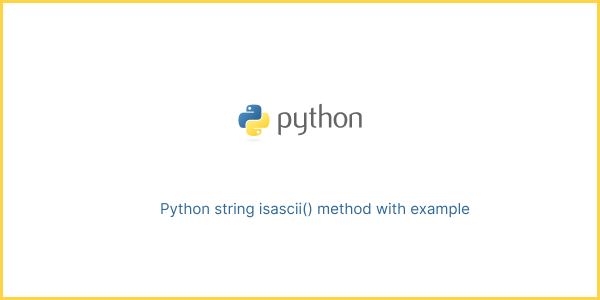The isascii() method is a string method in Python that checks whether the string contains ASCII characters only.
ASCII (American Standard Code for Information Interchange) is a standard encoding system for computers to represent text and other characters. It uses numbers from 0 to 127 to represent all English characters as well as some non-printable control characters.
Syntax:
string.isascii()Where string is the variable holding the string you want to check. The method doesn’t require any arguments.
How to use the isascii() method:
s = "Hello"
print(s.isascii())
# Output: True
s = "Hello €"
print(s.isascii())
# Output: FalseExample 1
Filtering out non-ASCII strings from a list.
strings = ["Hello", "Bonjour", "Guten Tag", "你好", "こんにちは"]
ascii_strings = [s for s in strings if s.isascii()]
print(ascii_strings)Example 2
Checking if a string can be safely used in an ASCII-only system.
username = "user1€"
if username.isascii():
print("Username is valid.")
else:
print("Username is not valid. It contains non-ASCII characters.")
